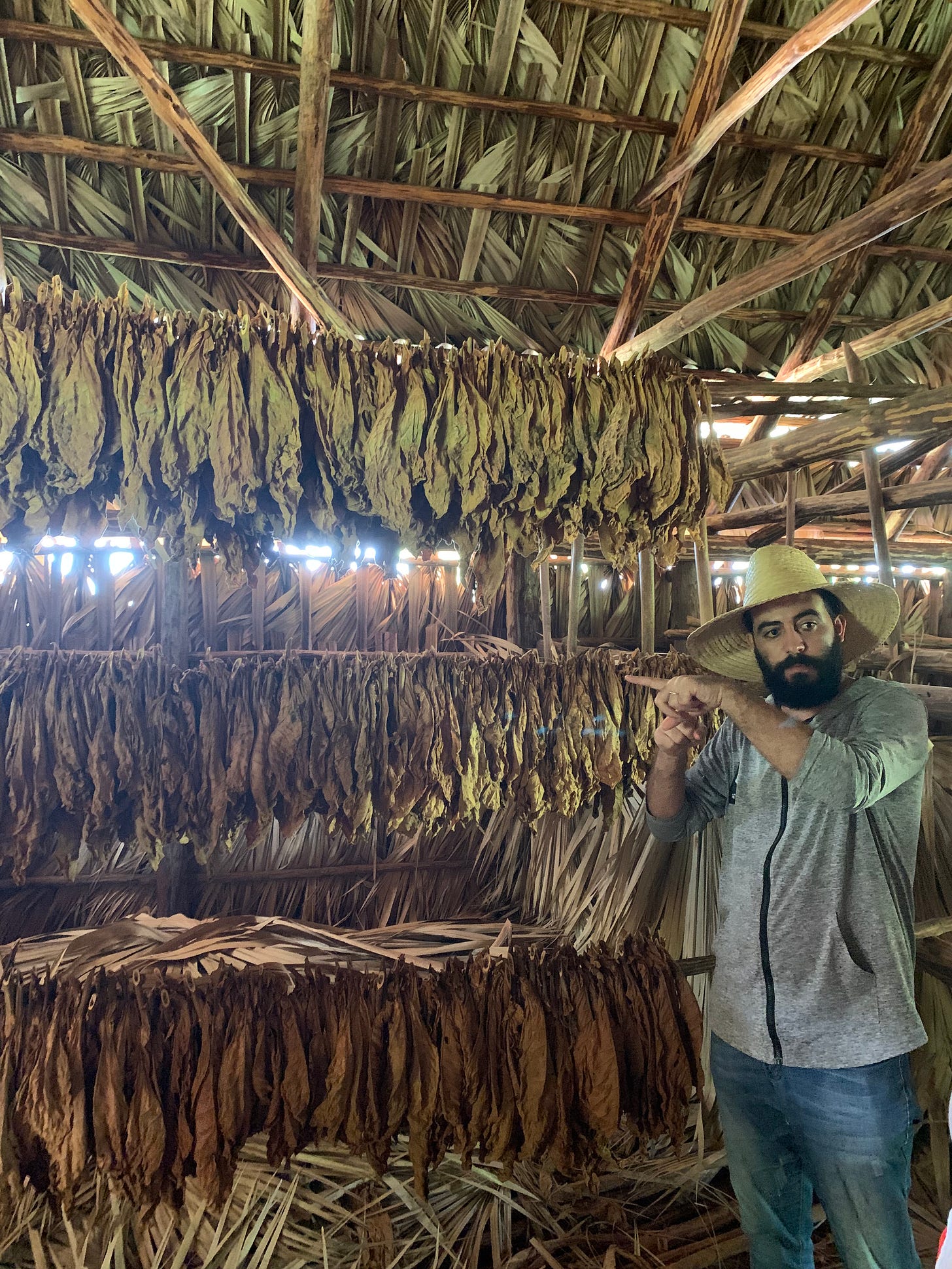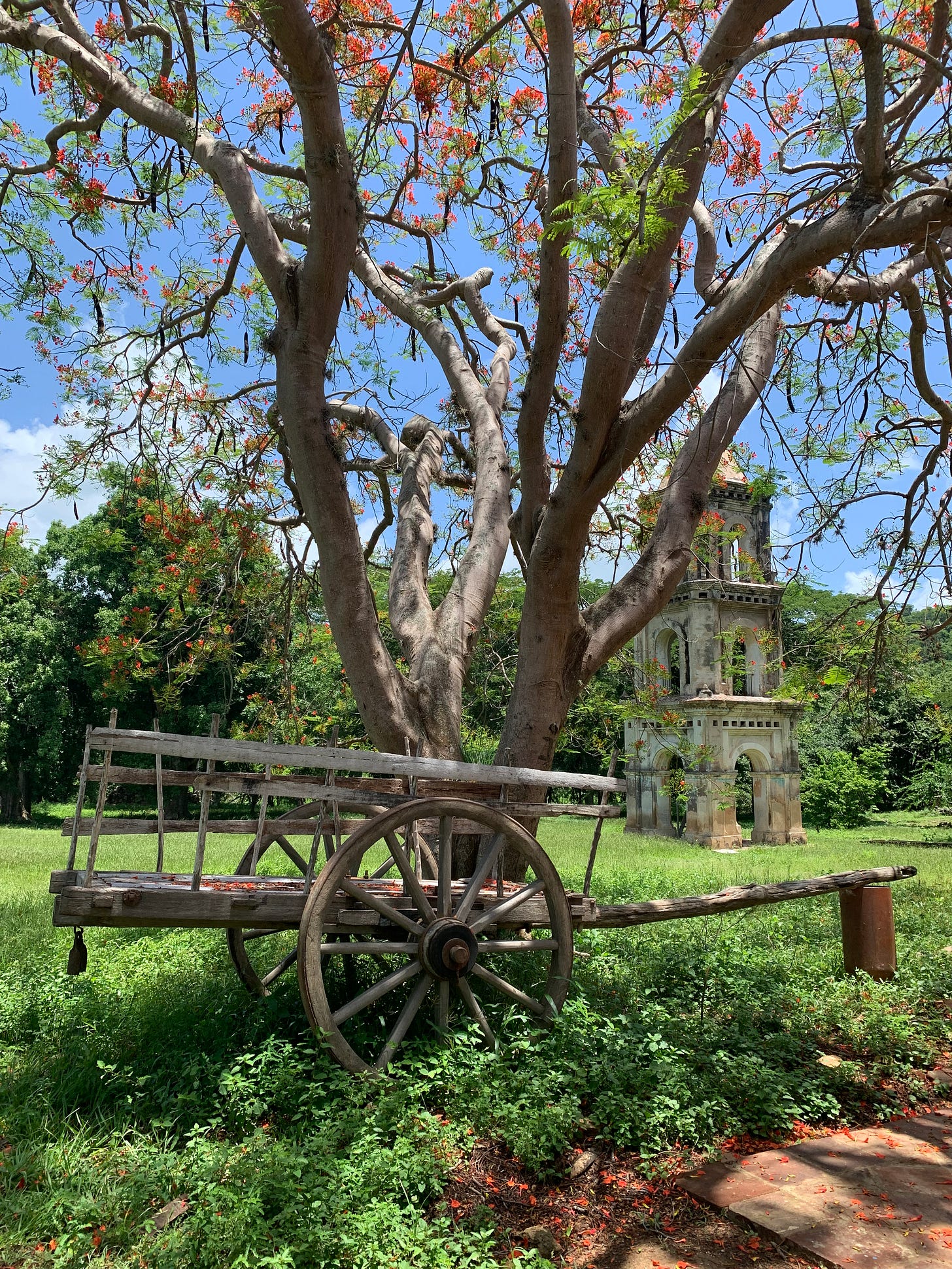Dispatches from Havana, Cuba: Inflationary Woes, A Timeless Charm & Rum History
I share three insights and takeaways from my trip to Cuba this past week as part of US-permitted travel for providing "Support for the Cuban People."
Dear Friends, apologies it has been a while since my last post.
This last week I was in Cuba under a US-permitted license which allows travel for the purpose of providing “Support for the Cuban People.” Since the loosening of restrictions on travel by the Obama Administration, people have been able to travel to Cuba from America for a number of specific purposes (tourists need not apply!); albeit some of these were rolled back, and additional restrictions put in place, under the Trump Administration.
Together with my parents and Xinyi we stayed with and met with some incredibly friendly Cubans who hosted us, showed us around, and shared their families’ experiences, giving us a rich sense of the multi-layered history of this country. So what did we learn…
1/ Cuba’s Economic Situation Is Not Good and Is Fueling a Mass Exodus
Like many countries worldwide, Cuba is currently facing significant economic challenges. However, this is not the first time the country has experienced difficult times. Following the collapse of the Soviet Union, upon which Cuba was economically dependent, the country's economy plummeted in the early 1990s. In response, Cuba initiated economic reforms, including the opening up of travel opportunities to outside visitors and the initial steps towards privatizing certain enterprises.
Many argue that the current economic situation in Cuba is even worse today. The COVID-19 pandemic severely impacted the economy, which heavily relies on tourism. Additionally, a government decision to change the currency about two years ago has arguably exacerbated inflationary pressures. Previously, one US dollar was effectively equivalent to around 24-25 pesos through Cuba’s then secondary currency, the CUC which was more or less tied to the US dollar.
However, the Government’s current exchange rate - used in many Government owned stores and services - is now effectively trading at 110 Cuban pesos to the US dollar. But in reality, non-government restaurants and shops use an exchange rate closer to 200 pesos to the US dollar. Meanwhile, government wages have largely remained stagnant at pre-covid levels. One guide who showed us around his neighborhood explained his salary of 50,000 pesos a month used to be a lot. Now it hardly buys anything at all. He can spend it all in one grocery outing.
This has prompted many ordinary Cubans to turn to trading all types of goods (ranging from essential groceries to the precious US dollars they accumulate) on an expanding black market. It has also forced many to take on 1 or 2 additional, often informal, jobs to try to earn as many US dollars in direct cash as they can. Given the poor exchange rate offered by government banks (all banks are owned by the government in Cuba) they then hold onto these dollars and trade directly on the black market. Based on the present trajectory, and without some kind of intervention, it looks like most of the country will soon be operating on the black market with Cuban pesos at strong risk of becoming worthless. Already many non-government restaurants will only accept US dollars or Euros for instance.
Another significant factor driving the demand for US dollars is the surge in immigration as borders have reopened, partially fueled by the economic challenges in recent years. According to a local guide, a staggering 400,000 people have left Cuba in the past 18 months in search of better economic prospects and a brighter future. US dollars are crucial to finance this migration. This current Cuban exodus surpasses previous mass emigrations like the 1980 Mariel boat lift (125,000 people) and the 1994 Cuban rafter crisis (35,000 people), making it the largest since the Cuban revolution in 1959. Multiple guides confirmed the trend, with some mentioning that most people they knew now resided in Miami, while others spoke of friends leaving on a weekly basis. Conversations with individuals provided a profound sense of a mass exodus taking place.
Against this backdrop, the ongoing policy of the Biden Administration allowing travelers from America to directly support the Cuban people by staying with them and injecting money into the local economy is crucial, particularly in light of the country's currency decline. However, it is clear that a more comprehensive and transformative change is necessary to address Cuba's economic downturn. But that is a story for another day...
2/ Capturing the Timeless Charm and Economic Realities of Cuba
I have often heard the phrase "frozen in time" to describe Cuba, but it wasn't until now that I truly understood its significance. The Spanish colonial buildings, the tobacco farms of Vinales to the West of the country, and the vintage Cadillacs cruising through the streets of Havana transport you to an old-world Cuba. It's as if you can vividly envision the days of Hemingway himself strolling the streets during the pre-Revolution era of the 1950s, with little change apparent in the present day.
The art of crafting cigars remains unchanged, with farmers delicately folding tobacco leaves just as they have for generations. The vibrant display of colorful cars continues to be a source of pride, highlighting the resilience and spirit of the Cuban people, who are often regarded as among the proudest in Latin America.

However, beneath the surface charm, there is also a palpable sense of decadence and neglect, reflecting the country's prolonged economic struggle. It serves as a metaphor for the deep-rooted economic malaise that Cuba currently faces.
When President Obama made his historic visit to Cuba, there was speculation about the potential impact of globalization and the influence of multinational corporations on the country's unique charm. While these concerns may have been exaggerated, especially considering the heightened tensions faced during the Trump Administration, it is evident that investment and capital could play a significant role in nurturing the growth of private enterprises in Cuba. The entrepreneurial spirit of the people we encountered was inspiring, and it is likely that many who choose to leave would stay if they could envision a promising future. Ultimately, a balance can be struck between preserving Cuba's old-world allure and meeting the aspirations of its people is crucial for ensuring a sustainable path forward.
3/ The Deep-Rooted Legacy of Colonialism & Rum
One of the most profound experiences during our visit was exploring the historic city of Trinidad. Nestled in the heart of Cuba, this picturesque town exudes beauty and charm. However, like many places in the Caribbean, from Turks & Caicos to Barbados, Trinidad's captivating facade is accompanied by a dark history. As the once central outpost of the Spanish Empire's sugar-growing enterprises, the town's prosperity was built upon the merciless labor of enslaved individuals mostly from present-day Benin, the DRC, and Nigeria. This painful legacy casts a shadow over the town's past, serving as a poignant reminder of the inhumane practices that once prevailed.
At its peak 56 sugar factories operated in the surrounding Mirador del Valle de los Ingenios Valley. Now a World Heritage Site, the wealth from this once profitable enterprise was created off the backs of more than 14,000 slaves throughout the valley. In a dark irony, sugar and its by-product, molasses, were frequently used in the production of rum, a beverage that gained global popularity. It is a sobering fact that this delicious spirit has its origins rooted in such a horrific chapter of human history. It is a fact that in all likelihood often goes unnoticed or unacknowledged by many travelers as they indulge in their mojitos and daiquiris.

In contrast to other parts of the Caribbean where there has been a notable effort to reclaim and transform the dark history associated with the sugar industry, it was hard to discern what the situation was in Cuba. While visiting Barbados several months ago, I had the opportunity to witness firsthand how the original Mount Gay distillery (est. 1703) is actively contributing to the region's growth. In Cuba, the majority of rum distilleries remain under government ownership. It is worth noting that renowned brands like Bacardi were originally Cuban-owned before being nationalized after the revolution. The status of workers' salaries, which as I pointed out above has remained stagnant, further raises uncertainty about the extent to which ordinary Cubans benefit from the sale of this beloved drink.

Furthermore, it is worth noting that the profits generated from the exploitation of sugar in the Caribbean played a significant role in the industrialization of the Western world. This, in turn, has set the stage for the current challenges of climate change, which disproportionately affect these very countries. However, delving into this complex subject is a topic for another time.
In the meantime, if you're eager to delve deeper into these interconnected topics, I highly recommend exploring additional resources. The Empire Podcast is currently producing a compelling series on slavery. For a broader understanding of the relationship between climate change and historical contexts, podcasts like Outrage + Optimism offer thought-provoking discussions on a recurring basis. Additionally, Henry Jeffreys' book "Empire of Booze" features a captivating chapter that explores the intricate ties between rum and empire.
******
There is much to be inspired by in Cuba, particularly by its resilient people who, with the right level of investment, have the potential to accomplish so much more for their country. I will be on the lookout for more inspiring stories.
Until next time!
Mick
P.S. I've recently joined Threads, so be sure to check out my profile there @micksheldrick








